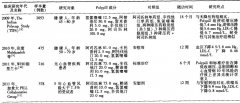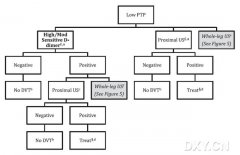读医学网
2010年美国AHA、ASA年卒中或短暂性脑缺血发作患者卒中二级预防指
发布时间:2014-05-19 10:34 类别:神经系统疾病 标签:provide aim statement generalizabi 来源:丁香园
Stroke is a major source of mortality and morbidity in the United States. Survivors of a transient ischemic attack (TIA) or stroke represent a population at increased risk of subsequent stroke. Approximately one quarter of the 795 000 strokes that occur each year are recurrent events. The true prevalence of TIA is difficult to gauge because a large proportion of patients who experience a TIA fail to report it to a healthcare provider. On the basis of epidemiological data defining the determinants of recurrent stroke and the results of clinical trials, it is possible to derive evidence-based recommendations to reduce stroke risk.
Notably, much of the existing data come from studies with limited numbers of older adults, women, and diverse ethnic groups, and additional research is needed to confirm the generalizability of the published findings. The aim of this statement is to provide clinicians with the most up-to-date evidence-based recommendations for the prevention of ischemic stroke among survivors of ischemic stroke or TIA. A writing committee chair and vice chair were designated by the Stroke Council Manuscript Oversight Committee. A writing committee roster was developed and approved by the Stroke Council with representatives from neurology, cardiology, radiology, surgery, nursing, pharmacy, and epidemiology/biostatistics. The writing group conducted a comprehensive review and synthesis of the relevant literature. The committee reviewed all compiled reports from computerized searches and conducted additional searches by hand. These searches are available on request.
Searches were limited to English-language sources and human subjects. Literature citations were generally restricted to published manuscripts appearing in journals listed in Index Medicus and reflected literature published as of August 1, 2009. Because of the scope and importance of certain ongoing clinical trials and other emerging information, published abstracts were cited for informational purposes when they were the only published information available, but recommendations were not based on abstracts alone. The references selected for this document are exclusively for peer-reviewed papers that are representative but not allinclusive, with priority given to references with higher levels of evidence. All members of the committee had frequent opportunities to review drafts of the document and reach a consensus with the final recommendations. Recommendations follow the American Heart Association (AHA) and the American College of Cardiology (ACC) methods of classifying the level of certainty of the treatment effect and the class of evidence (Tables 1 and 2).
Although prevention of ischemic stroke is the primary outcome of interest, many of the grades for the recommendations were chosen to reflect the existing evidence on the reduction of all vascular outcomes after stroke or TIA, including subsequent stroke, myocardial infarction (MI), and vascular death. The recommendations in this statement are organized to help the clinician who has arrived at a potential explanation of the cause of ischemic stroke in an individual patient and is embarking on selection of a therapy to reduce the risk of a recurrent event and other vascular outcomes. Our intention is to update these statements every 3 years, with additional interval updates as needed, to reflect the changing state of knowledge on the approaches to prevent a recurrent stroke.




